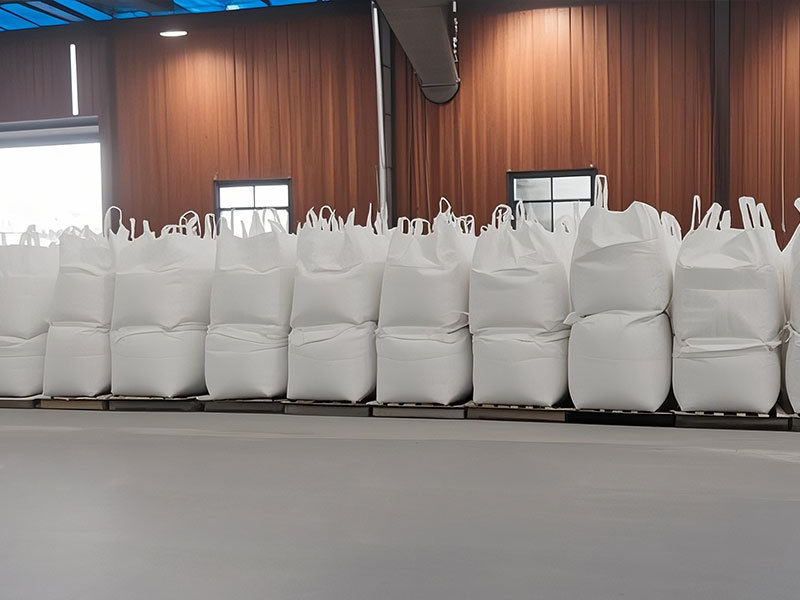Understanding the Role of Ceramic STPP in Chemical Applications
2025-07-28
Sodium tripolyphosphate (STPP) is a versatile inorganic compound widely utilized in various industries, including the biochemical sector. When discussing "ceramic STPP suppliers," it is essential to understand the unique properties that make STPP a valuable component in numerous applications.
STPP is primarily known for its role as a sequestrant and a buffering agent. Its ability to bind metal ion

Sodium tripolyphosphate (STPP) is a versatile inorganic compound widely utilized in various industries, including the biochemical sector. When discussing "ceramic STPP suppliers," it is essential to understand the unique properties that make STPP a valuable component in numerous applications.
STPP is primarily known for its role as a sequestrant and a buffering agent. Its ability to bind metal ions effectively makes it a crucial ingredient in detergents, ceramics, and various chemical formulations. In the chemical industry, STPP often finds applications in formulations requiring enhanced stability, improved solubility, and controlled pH levels.
In ceramic applications, STPP serves as a key additive that improves the workability and fluidity of clay mixtures. By acting as a dispersant, STPP helps to maintain a uniform distribution of particles, which is essential for achieving consistent quality in ceramic products. This property is particularly beneficial in the production of tiles, sanitary ware, and other ceramic materials, where even mixing can significantly influence the final product's durability and aesthetic appeal.
Moreover, ceramic STPP suppliers play a vital role in ensuring the availability of high-quality STPP. The selection of a reliable supplier is crucial for industries that depend on STPP for their manufacturing processes. Suppliers should adhere to stringent quality control measures to ensure that the STPP provided meets industry standards and specific customer requirements.
In addition to its applications in ceramics, STPP is often used in food processing, where it acts as a preservative and a texture-enhancing agent. Its ability to retain moisture and improve the texture of food products makes it a valuable additive in the food industry. However, it is important to note that the use of STPP in food applications is subject to regulatory guidelines, and suppliers must comply with these regulations to guarantee food safety.
The environmental impact of STPP is also worth noting. As industries increasingly focus on sustainability, many suppliers are exploring eco-friendly alternatives and production methods to reduce the environmental footprint of STPP. This trend reflects a broader movement within the chemical industry towards more sustainable practices.
In conclusion, ceramic STPP suppliers play a crucial role in the biochemical and ceramic industries by providing a versatile compound that enhances the quality and performance of various products. Understanding the properties and applications of STPP can help professionals make informed decisions about sourcing and utilizing this important additive in their processes. Whether in ceramics or other biochemical applications, the significance of STPP cannot be overstated.
STPP is primarily known for its role as a sequestrant and a buffering agent. Its ability to bind metal ions effectively makes it a crucial ingredient in detergents, ceramics, and various chemical formulations. In the chemical industry, STPP often finds applications in formulations requiring enhanced stability, improved solubility, and controlled pH levels.
In ceramic applications, STPP serves as a key additive that improves the workability and fluidity of clay mixtures. By acting as a dispersant, STPP helps to maintain a uniform distribution of particles, which is essential for achieving consistent quality in ceramic products. This property is particularly beneficial in the production of tiles, sanitary ware, and other ceramic materials, where even mixing can significantly influence the final product's durability and aesthetic appeal.
Moreover, ceramic STPP suppliers play a vital role in ensuring the availability of high-quality STPP. The selection of a reliable supplier is crucial for industries that depend on STPP for their manufacturing processes. Suppliers should adhere to stringent quality control measures to ensure that the STPP provided meets industry standards and specific customer requirements.
In addition to its applications in ceramics, STPP is often used in food processing, where it acts as a preservative and a texture-enhancing agent. Its ability to retain moisture and improve the texture of food products makes it a valuable additive in the food industry. However, it is important to note that the use of STPP in food applications is subject to regulatory guidelines, and suppliers must comply with these regulations to guarantee food safety.
The environmental impact of STPP is also worth noting. As industries increasingly focus on sustainability, many suppliers are exploring eco-friendly alternatives and production methods to reduce the environmental footprint of STPP. This trend reflects a broader movement within the chemical industry towards more sustainable practices.
In conclusion, ceramic STPP suppliers play a crucial role in the biochemical and ceramic industries by providing a versatile compound that enhances the quality and performance of various products. Understanding the properties and applications of STPP can help professionals make informed decisions about sourcing and utilizing this important additive in their processes. Whether in ceramics or other biochemical applications, the significance of STPP cannot be overstated.
PREVIOUS:


 TESFA STPP
TESFA STPP